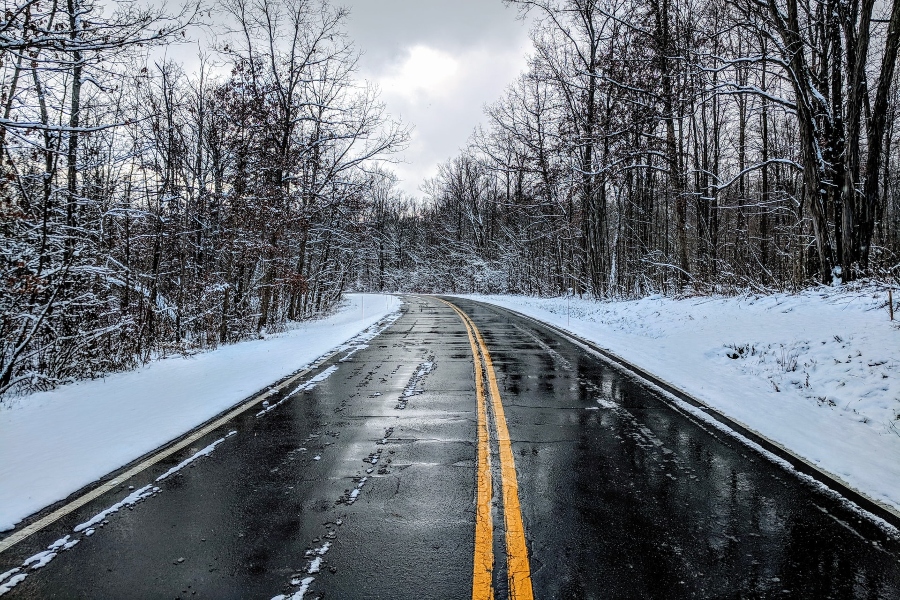
Car accidents are always on the rise during wintertime. It’s just a fact of life in Minnesota. Whether this increase is due to newcomers who haven’t experienced winter weather before, or long-time residents not being as careful as they should on the road, the number of accidents always increases. Between 2016-2020, icy or snowy conditions led to nearly 80,000 accidents. These accidents resulted in nearly 20,000 injuries and, tragically, almost 200 deaths.
The car accident attorneys with Sand Law would like to share some tips on steps you can take to help avoid getting into a motor vehicle wreck during the winter. If you are involved in an accident caused by another motorist’s negligence, please get in touch with us for a free consultation. You can give us a call at 651-291-7263 or contact us online.
Prepare Your Vehicle for Winter Weather
Whether you’re driving a four-wheel sedan or a huge semi-truck, you always need to make sure your vehicle is ready to take on extreme winter conditions. Winter tires are a must, because they do a much better job of gripping the road surface than traditional tires. They also do a better job of helping you apply the brakes securely.
You’ll also want to ensure those winter tires have enough air pressure in them. The cold weather makes the air in the tires contract. This is the reason why you see the “low tire pressure” warning light on your dashboard when the temperature dips. When your tires are properly inflated, they handle much better.
These are some other ways to get your car ready for extreme cold:
- Check your battery to ensure it has a full charge.
- Change your wiper blades.
- Make sure you have enough antifreeze.
The more vehicle preparations you make, the more confident you’ll be when the temperatures take a nosedive, and the ice and snow roll in.
Always Check the Road Conditions Before Leaving
The last thing you’ll want to deal with is being caught unprepared for any winter weather that might be coming your way. Stay up to date on the weather, even if you’re just traveling a few miles. It might sound silly to do this if you’re only going to the grocery store, but it will always be better to be over-prepared than under-prepared.
When the temperatures have been below freezing for an extended period of time, always assume there will be icy spots on the road – even if no ice or snow has fallen in a few days. Always be cautious, especially when you’re coming up on a bridge or an overpass. Any type of elevated roadway will be prone to developing ice.
Clear Your Vehicle of Snow and Ice
As a courtesy to others on the road, clear your roof, trunk and hood of any snow or ice that accumulated during the last storm. If you don’t, that snow or ice could make it very difficult for someone behind you to be able to see.
Not only is failing to clear your vehicle dangerous, it could also cost you a hefty fine. According to Minnesota Statute 169.81, no vehicle can be driven on a highway without its load being secured. This load cannot drop, sift, leak, blow, or otherwise escape. Failing to remove snow and ice could be construed by a police officer as failing to secure a load. That would be considered a misdemeanor punishable by a fine of up to $1,000.
Slow Down and Increase Following Distance
Traveling too fast on an icy or snowy road is a recipe for disaster, leading to a horrible car accident that can result in debilitating injuries. Victims of these injuries often incur severe financial losses, such as medical expenses, lost wages and others.
The most important thing you can do is to slow down when roads are hazardous. Speed limits are posted for perfect driving conditions, when the roads are dry and there’s no precipitation. They’re not meant for icy road surfaces. You definitely don’t want to go 65 or 70 miles an hour on a slick highway. If you have to be someplace at a certain time, leave much earlier than you normally would. It will be an inconvenience for sure, but it could also ensure you’ll be safe.
Since you’ll need more time to come to a stop on a slick road, you’ll need to leave more space than normal between you and any vehicles in front of you. A good rule of thumb is to leave at least six seconds of braking space between you and other motorists driving ahead of your vehicle.
Learn How to Recover
Any sort of sudden movement on an icy road could put your vehicle into a skid. Always be very deliberate when driving in these conditions. Take turns slowly, and apply the brakes slower than you usually do.
If your vehicle does start to skid, your reaction will depend on whether or not you have antilock brakes. If you do, firmly press the brakes (don’t slam on them) and turn into the spin. If you don’t, apply gentle pressure to the brakes to regain control.
Avoid Distractions and Risky Behavior
Distracted driving is always dangerous. That danger gets exponentially higher when you’re driving on snowy or icy streets. Don’t touch your smartphone, and don’t adjust the radio. Keep your focus entirely on the road, and nothing else.
I Was Involved in a Car Accident in the Snow. What Now?
It’s an unfortunate fact that an accident could still occur, no matter what kinds of precautions you take. If this happens to you, here are some things you’ll need to do.
- Call for medical attention immediately for yourself or any others who may be hurt.
- Contact the police. If there are any injuries, an officer will investigate the accident and fill out a report giving the officer’s opinion on how it happened.
- Get in touch with an attorney as soon as you can. Sand Law attorneys have the resources to conduct their own investigation into an accident, gathering the evidence needed to help you obtain the compensation you deserve.
If you would like to schedule a free case review, contact Sand Law online or call 651-291-7263.

